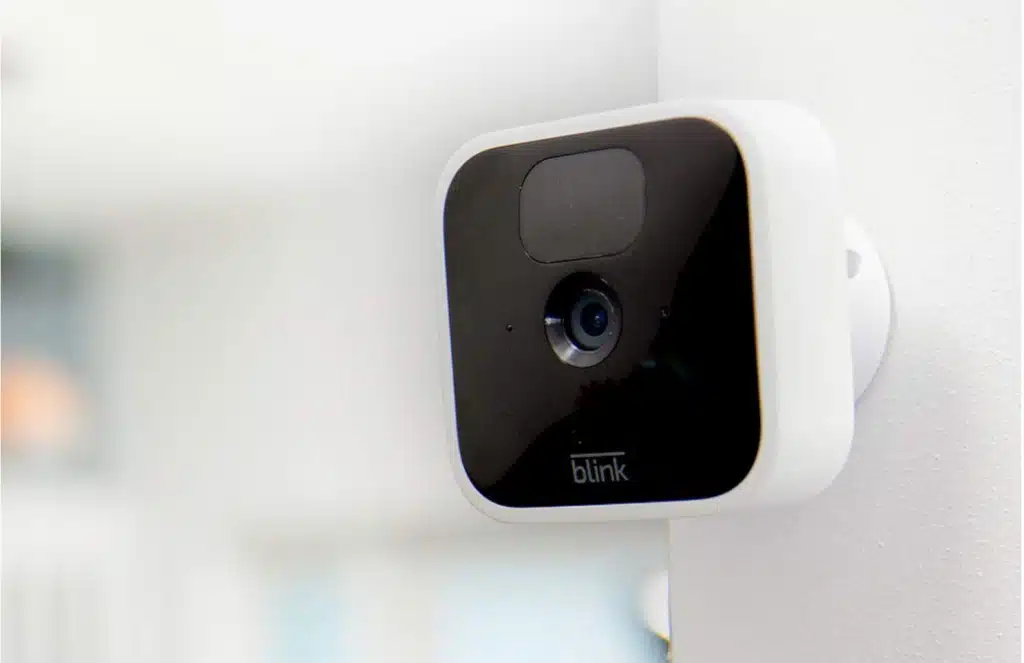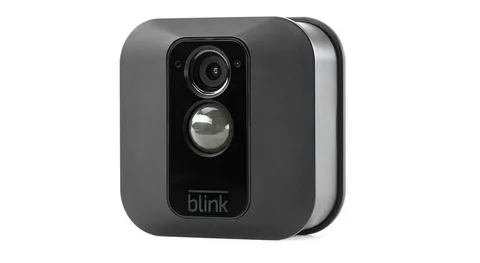Introduction
What Frequency Do The Blink Cameras Use: Modern surveillance systems include security cameras to help people and companies monitor and protect themselves. For their convenience and ease of use, Blink cameras are popular among numerous brands and models. Understanding these cameras’ technical specs is essential for maximizing performance and meeting security objectives.
These gadgets’ wireless communication and connectivity capabilities depend on their frequency. The frequency of Blink cameras affects their surveillance efficiency and dependability. Blink camera technology, wireless communication frequency, and how it influences range, signal strength, and interference resistance.
The frequency spectrum commonly employed by Blink cameras, we can gain insights into how these devices communicate with their base stations and other connected devices. Moreover, we will explore the implications of frequency selection on the camera’s ability to capture and transmit data effectively. Understanding this aspect will enable users to make informed decisions when deploying Blink cameras for their security needs, be it for home surveillance, commercial applications, or public spaces.

Are Blink cameras 2.4 GHz or 5GHz?
No, Blink cameras do not support 5GHz Wi-Fi connectivity. They only support 2.4GHz Wi-Fi networks. This is because Blink cameras use a low-power Wi-Fi chip that only supports 2.4GHz networks.
Blink cameras generally use 2.4 GHz, not 5 GHz. Wireless communication and camera performance depend on this frequency. The 2.4 GHz spectrum is excellent for Blink cameras because to various features.
Due to its extensive adoption and interoperability with other wireless technologies, 2.4 GHz has long been used for wireless devices, including home security cameras. This frequency is good for interior and outdoor surveillance applications where cameras are far from the Wi-Fi network or base station because it provides outstanding signal coverage.
In locations with physical barriers, the 2.4 GHz band penetrates walls and obstructions better, allowing more stable connectivity. This trait is essential for robust Blink camera-base station connectivity.
Do Blink cameras use 2.4 GHz?
All Blink cameras require a 2.4 GHz Wi-Fi Internet connection. The cameras use Wi-Fi to send images and notifications so you can view them from the Blink app on your mobile device. At minimum, Blink systems need a connection of at least 2 Mbps upload speed.
Blink cameras communicate wirelessly at 2.4 GHz. Blink chose the 2.4 GHz spectrum to optimize performance and compatibility in residential and business settings.
Since it provides dependable coverage over larger distances, 2.4 GHz has been widely used for wireless devices, including security cameras. This frequency has good wall-penetration for indoor security cameras that must transmit signals through walls and furniture.
Since most home routers and access points support 2.4 GHz, Blink cameras can seamlessly connect into most Wi-Fi networks. Users can easily set up Blink cameras without networking equipment due to their compatibility.
Why won’t Blink connect to 5GHz Wi-Fi?
Blink devices can only connect to your router’s 2.4 GHz frequency band. Therefore, if your router broadcasts both frequency bands, turn off the 5 GHz option on your router settings. Once the sync module connects, you can turn back on the 5 GHz Wi-Fi SSID.
Blink cameras are designed to connect to 2.4 GHz Wi-Fi networks rather than 5 GHz networks. There are several reasons behind this design choice:
Frequency Range
The 2.4 GHz frequency has a longer wavelength compared to the 5 GHz frequency. This longer wavelength allows it to penetrate obstacles like walls and furniture more effectively, ensuring better signal coverage over longer distances. This characteristic is crucial for devices like Blink cameras that may be placed at a distance from the Wi-Fi router or base station.
Compatibility
Many older Wi-Fi devices and most smart home devices operate on the 2.4 GHz band. By using the 2.4 GHz frequency, Blink ensures its cameras can seamlessly integrate into existing networks without requiring users to upgrade their routers or invest in additional networking equipment.
Interference
The 5 GHz band offers faster data transfer rates but is more susceptible to interference from physical barriers. It may not provide the same level of reliability and stability in crowded Wi-Fi environments where multiple devices are competing for signal clarity.
User Accessibility
Blink prioritizes user-friendliness and ease of setup. Using the 2.4 GHz frequency simplifies the installation process, as most users are familiar with this frequency and can easily configure their Wi-Fi settings to accommodate the camera’s connection needs.
How do the Blink cameras work?
It’s powered by two included AA lithium-ion batteries and works over Wi-Fi, sending alerts and recording video clips from 5 seconds to 60 seconds long when triggered by motion. It features 1080p full HD video quality with a 110-degree field of view, two-way audio, and night vision.
Blink cameras are a type of wireless security camera that utilizes advanced technology to provide reliable surveillance and peace of mind to users. Understanding how Blink cameras work can shed light on their functionality and effectiveness in various security applications.
Wireless Connectivity
Blink cameras operate on a wireless network, connecting to a Wi-Fi router or a Blink Sync Module through the 2.4 GHz frequency band. This wireless connectivity eliminates the need for cumbersome wiring, making installation and setup straightforward.
Motion Detection
Blink cameras are equipped with motion sensors that can detect movement within their field of view. When the camera detects motion, it triggers a recording event, capturing video footage of the activity. This feature helps conserve battery life and storage space by only recording when activity is detected.
Video Recording and Storage
When motion is detected, Blink cameras record short video clips, typically ranging from a few seconds to a few minutes, depending on the user’s settings. These clips are then stored locally on the camera or, if a subscription plan is active, on the Blink cloud servers.
Alerts and Notifications
Once a motion-triggered event occurs, Blink cameras can send instant alerts and notifications to the user’s smartphone or other connected devices. This real-time notification system allows users to be aware of potential security breaches and take immediate action.
Battery-Powered Option
Some Blink camera models are battery-powered, offering flexibility in camera placement without the need for a constant power source. The cameras’ energy-efficient design ensures extended battery life, and users receive low-battery alerts to ensure uninterrupted surveillance.

Do Blink cameras need good Wi-Fi?
Wi-Fi Network Requirements:
2.4GHz 802.11b/g/n. Non-cellular 2.4 GHz Wi-Fi network: Blink devices are not compatible with MiFi devices or personal Wi-Fi hotspots provided by cellular network providers such as T-Mobile, Verizon, etc.
Yes, Blink cameras do require a stable and reliable Wi-Fi connection for optimal performance. A good Wi-Fi network is essential for ensuring that the cameras can function effectively and provide seamless surveillance. Several reasons highlight the importance of having a strong Wi-Fi connection for Blink cameras:
Live Streaming and Remote Access
A robust Wi-Fi connection allows Blink cameras to stream live video footage to the user’s mobile app or computer. With a stable connection, users can access real-time video feeds and review recorded footage without buffering or interruptions.
Motion Detection and Alerts
Blink cameras rely on motion detection to trigger recording events and send alerts to the user’s smartphone or other connected devices. A strong Wi-Fi connection ensures that these alerts are delivered promptly, allowing users to respond to potential security threats in a timely manner.
Video Recording and Cloud Storage
Blink cameras record motion-activated videos locally or in the cloud. A solid Wi-Fi connection uploads these videos to the cloud quickly, ensuring secure storage and simple access.
Firmware Updates and Maintenance
Blink cameras receive occasional firmware updates to enhance their performance, security, and features. A reliable Wi-Fi connection is necessary to download and install these updates seamlessly, keeping the cameras up to date and functioning optimally.
What frequency do Blink cameras use for communication?
Blink cameras use the 2.4 GHz frequency for communication with the Blink Sync Module, which acts as the central hub for the camera system.
Blink cameras use the 2.4 GHz frequency for wireless communication. The 2.4 GHz frequency is a standard and widely adopted choice for various wireless devices, including security cameras. This frequency range offers several advantages that make it suitable for Blink cameras’ communication needs.
Compatibility
The 2.4 GHz frequency is compatible with a wide range of Wi-Fi routers and access points. Most home networks and commercial Wi-Fi setups operate on this frequency, ensuring seamless integration and easy setup for Blink cameras without the need for additional networking equipment.
Signal Coverage and Penetration
The 2.4 GHz frequency has a larger wavelength than the 5 GHz frequency, allowing superior signal coverage over longer distances. It also penetrates walls and obstructions better, making it perfect for interior and outdoor surveillance where cameras are far from the Wi-Fi router or base station.
Interference Mitigation
In congested Wi-Fi locations, 2.4 GHz interference can be more likely, but Blink cameras can handle it. Cameras use modern wireless communication protocols to reduce interference and preserve connections.
Power Efficiency
The 2.4 GHz frequency is generally more power-efficient than the 5 GHz frequency, making it a suitable choice for battery-powered Blink camera models. This efficiency helps prolong battery life, ensuring extended periods of surveillance without frequent battery replacements.
Can I change the frequency or channel used by Blink cameras?
No, Blink cameras are designed to operate solely on the 2.4 GHz frequency, and there is no user-accessible option to change this frequency or channel.
Wireless communication frequency and channel options are not available on blink cameras. The firmware of these 2.4 GHz cameras selects channels automatically.
Blink chose 2.4 GHz to work with a variety of Wi-Fi routers and networks. This frequency is ideal for indoor and outdoor surveillance due to its long-range signal coverage and wall and barrier penetration. To avoid interference with surrounding wireless devices, the camera’s firmware and Wi-Fi router automatically choose channels.
Automatic channel selection optimises the camera’s wireless connection and reduces connectivity difficulties. Blink cameras cannot be manually adjusted for frequency or channel, but this simplifies setup and makes it easy. Simply connect the camera to their Wi-Fi network via the Blink app, and the camera will automatically select frequency and channel.
Can I use Blink cameras with a 5 GHz Wi-Fi network?
Blink cameras are not compatible with 5 GHz Wi-Fi networks. However, if your home network has dual-band capability (both 2.4 GHz and 5 GHz), make sure that it is broadcasting on the 2.4 GHz band to allow the Blink cameras to connect successfully.
Blink cameras only support 2.4 GHz Wi-Fi. Thus, 5 GHz Wi-Fi networks cannot directly connect Blink cameras.
I chose 2.4 GHz because it delivers better signal coverage over longer distances and across buildings and barriers. It can monitor interior and outdoor areas with cameras remote from the Wi-Fi router or base station.
A dual-band router that supports 2.4 GHz and 5 GHz frequencies must broadcast both frequencies individually. Dual-band or simultaneous dual-band operation is available in most current routers. You may connect Blink cameras to 2.4 GHz and other suitable devices to 5 GHz.

Conclusion
Blink cameras’ wireless connection and surveillance performance depend on their frequency. Blink cameras use 2.4 GHz, which benefits their dissemination. The widely used 2.4 GHz band makes it compatible with other wireless devices and easy to integrate into existing networks.
However, this frequency’s popularity can cause interference, especially in highly populated locations where several devices compete for signal clarity. Understanding Blink camera frequency helps users enhance security systems. Understanding wireless communication lets users position cameras and base stations for best coverage and signal strength.
Moreover, awareness of potential interference sources allows users to take preventive measures and reduce disruptions in video transmission. As technology continues to evolve, it is essential for users to stay informed about the latest developments and updates related to Blink cameras’ frequency settings. Manufacturers might introduce new models with additional frequency options or enhanced capabilities to adapt to changing wireless environments.

